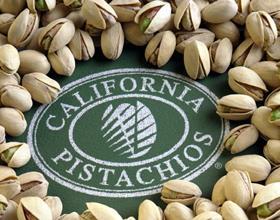
California is facing the smallest pistachio crop in a decade due to unfavourable growing conditions last spring, reports Western Farm Press.
A lack of chilling hours, drought and poor pollination conditions mean some growers are facing the grim prospect of crop failure.
However, substantial carry-over from last year's crop could mitigate the problem.
As September closed, California crop receipts were pegged at just over 262.7m lb, according to a memo issued by the California Pistachio Research Board.This is well below last year’s 520m lb crop, the report said.
“I’m not sure how much more will come in, but everyone’s guess is that the total US crop will not exceed 275m lb,” said Richard Matoian, executive director of the American Pistachio Growers in Fresno. “This is a very disappointing year indeed.”
The smallest California crop in the past decade was 237.5m lb in 2006. Last year’s crop came out of an ‘on’ year for the alternate bearing crop that is commonly marked by heavier crops following lighter ones.
But there had been an expectation that this year’s crop might match last year’s. Matoian says those hopes were dashed by two issues: “There was a lack of chill hours during the winter which contributed to uneven bloom,” he said. “Male trees came out at different times than females, and there was not an even pollination.”
This was in addition to the fourth year of a drought. Some 800 hours of temperatures below 45F are needed to set a good crop. In some instances, Matoian said, hours of below 45F temperatures were negated because they were followed by warm, sunny days.
Kern County farming consultant Carl Fanucchi told Western Farm Press the lack of chilling was particularly acute in the southern San Joaquin Valley.
Some orchards are harvesting as low as 200lb per acre when blanks are removed, he said. Mature trees can produce 3,000-4,000lb in a good year.
A bit of good news is that “the carryover from last year was pretty large,” said Chuck Nichols, who grows pistachios in Kings, Tulare and Fresno counties. Another positive note, he added, is that the quality of the crop is good and that there appeared to be less pressure from navel orangeworm.



